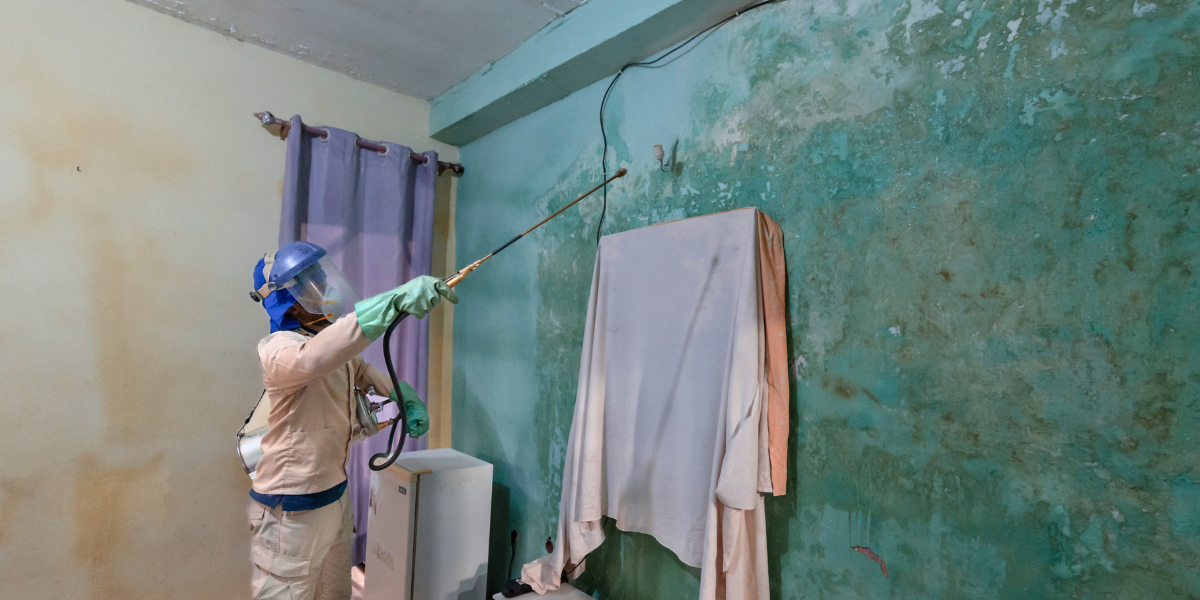Lower Indoor Residual Spraying Coverage May Provide Sufficient Level of Protection Against Malaria
April 18, 2025

One of the BIMEP's IRS sprayers spraying the inside of a residence on Bioko Island.
A research article published in the scientific journal Proceedings of the National Academy of Sciences (PNAS) by MCD’s Bioko Island Malaria Elimination Project (BIMEP) team found that lower indoor residual spraying (IRS) coverage levels may provide a similar level of protection as the WHO recommended minimum.
IRS, which prevents malaria by applying insecticide on the interior walls of structures, is a critical vector control tool. Global guidance recommends that high spray coverage (at least 80%-85% of homes sprayed) is necessary to ensure protection, but there is little evidence supporting this coverage target.
This study suggests that lower coverage (30%-60%) may provide a similar level of protection as the recommended minimum of 80%-85%. Given the high implementation cost of IRS, a reduction in required coverage could positively impact malaria control programs, either by allowing them to expand the areas protected by IRS or redistribute resources to support complementary activities.

"IRS is a highly effective but costly malaria control intervention. This study, through an analysis of historical data from Bioko Island, found that similar results could be achieved with much lower coverage levels (and costs), potentially allowing for a redistribution of resources to other malaria control activities," said David Galick (image at right), lead author and BIMEP’s monitoring and evaluation manager.
The study used data from four years of targeted IRS implementation on Bioko Island, Equatorial Guinea, to examine the relationship between the proportion of the community that was sprayed and the prevalence of malaria. While these findings are limited in strength by the observational nature of the data, they raise questions for further research on how IRS coverage impacts epidemiological outcomes and how malaria control programs could set programmatic IRS coverage targets.
The BIMEP IRS team has provided 32 IRS rounds on Bioko Island over the last 22 years, with more than 1 million homes sprayed during this period. The findings of the BIMEP study provide a pathway to a more equitable protection to community members who need it most.